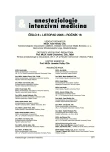The role of linezolide in the treatment of resistant gram-positive infections
Postavení linezolidu v léčbě rezistentních grampozitivních infekcí
V posledních desetiletích narůstá celosvětově výskyt grampozitivních infekcí vyvolaných bakteriemi rezistentními k běžně užívaným antibiotikům. V České republice se rezistentní kmeny objevily později, ale jejich počet stoupá a stále častěji bude třeba používat jiná antibiotika než dosud. Největší nárůst lze pozorovat u methicilin-rezistentních S. aureus, obtíže přináší léčba rezistentních koaguláza negativních stafylokoků, vankomycin rezistentní enterokoky jsou zatím prokazovány zejména u hematoonkologických pacientů. Léčebné použití vankomycinu je limitováno úzkou terapeutickou šíří, nefrotoxicitou a omezeným průnikem do tkání (plíce) a likvoru. Linezolid nabízí alternativu zejména u infekcí kůže a měkkých tkání a prokazatelně vyšší klinickou účinnost oproti vankomycinu u nozokomiálních pneumonií a infekcí v místě chirurgického výkonu. Výhodné jsou perorální formy, které umožňují sekvenční léčbu a časnější propuštění z nemocnice.
Klíčová slova:
rezistentní bakterie – antibiotika – nozokomiální pneumonie – linezolid – MRSA
Authors:
P. Dlouhý 1; I. Herold 2; M. Kolář 3
; J. Beneš 4; P. Cetkovský 5; T. Doležal 6; D. Jahoda 7; M. Kouba 8; I. Novák 9; O. Nyč 10; J. Pilnáček 11; Z. Ráčil 12; T. Sechser 13; P. Ševčík 14; P. Švihovec 15
Authors‘ workplace:
Infekční oddělení Masarykovy nemocnice v Ústí nad Labem
1; Anesteziologicko-resuscitační oddělení Klaudiánovy nemocnice, Mladá Boleslav
2; Ústav mikrobiologie FNO a LF UP, Olomouc
3; II. infekční klinika 3. LF UK a FN Na Bulovce, Praha
4; Ústav hematologie a krevní transfuze, Praha
5; Ústav farmakologie 3. LF UK, Praha
6; Ortopedická klinika 1. LF UK a FN Motol, Praha
7; Ústav hematologie a krevní transfuze, Praha
8; 1. interní klinika LF UK a FN Plzeň
9; Ústav lékařské mikrobiologie 2. LF UK, Praha
10; Ortopedicko-úrazové oddělení, Nemocnice Kladno
11; Interní hematoonkologická klinika, LF MU a FN Brno
12; Pracoviště klinické farmakologie Centra diabetologie IKEM, Praha
13; Anesteziologicko-resuscitační klinika, FN U sv. Anny, Brno
14; Gynekologicko-porodnická klinika, Všeobecná fakultní nemocnice, Praha
15
Published in:
Anest. intenziv. Med., 16, 2005, č. 6, s. 305-312
Category:
Intensive Care Medicine - Original Paper
Overview
Incidence of gram-positive infections caused by bacteria resistant to commonly used antibiotics has been on the increase in the past decades. Resistant strains appeared in the Czech Republic later than in other countries, however their number has been increasing and the use of new antibiotics is becoming necessary. The greatest increase of incidence can be seen in infections caused by methicillin-resistant S. aureus and coagulase-negative staphylococci. Vancomycin-resistant enterococci are usually found in hemato-oncology patients. The curative use of vancomycin is limited due to its narrow therapeutical range, nephrotoxicity and limited penetration into tissues (lung) and CSF. Linezolide is a good option mainly in infections of skin and soft tissues, and it has an evincible advantage over vancomycin in the treatment of nosocomial pneumonia and surgical-site infections. Oral forms are favourable allowing switch therapy and earlier discharge from hospital.
Key words:
resistant bacteria – antibiotics – treatment of nosocomial pneumonia – linezolide – MRSA
Labels
Anaesthesiology, Resuscitation and Inten Intensive Care MedicineArticle was published in
Anaesthesiology and Intensive Care Medicine

2005 Issue 6
Most read in this issue
- The role of linezolide in the treatment of resistant gram-positive infections
- A comparison of the effectiveness of continuous positive airway pressure and high-frequency jet ventilation applied by naso-oral mask in patients treated for pulmonary oedema
- Predictive factors of failure of non-invasive positive pressure ventilation in patients with acute respiratory failure due to exacerbation of chronic obstructive airway disease
- Administration of recombinant activated factor VII (rFVIIa) in non-haemophiliac patients in the Czech Republic – analysis of selected data from the UniSeven register
